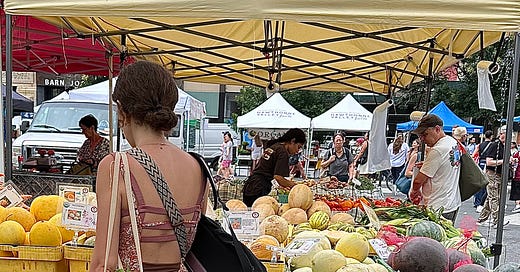The street report: What people are wearing this week at the Union Square farmer’s market
There’s a beautiful and ancient tradition about open-air market shopping that is social and alive and inspiring -- the clothes are only half of it
See the last street report here.
There’s a tender quiet about the farmer’s market if you can get there early enough on a summer morning. When it’s really hot, you can smell the basil from two blocks away. The soft aroma almost creates the illusion of a breeze.
You hear the small murmur of transactions in progress, and produce bags crunching and bunching …
Keep reading with a 7-day free trial
Subscribe to The Cereal Aisle by Leandra Medine Cohen to keep reading this post and get 7 days of free access to the full post archives.



